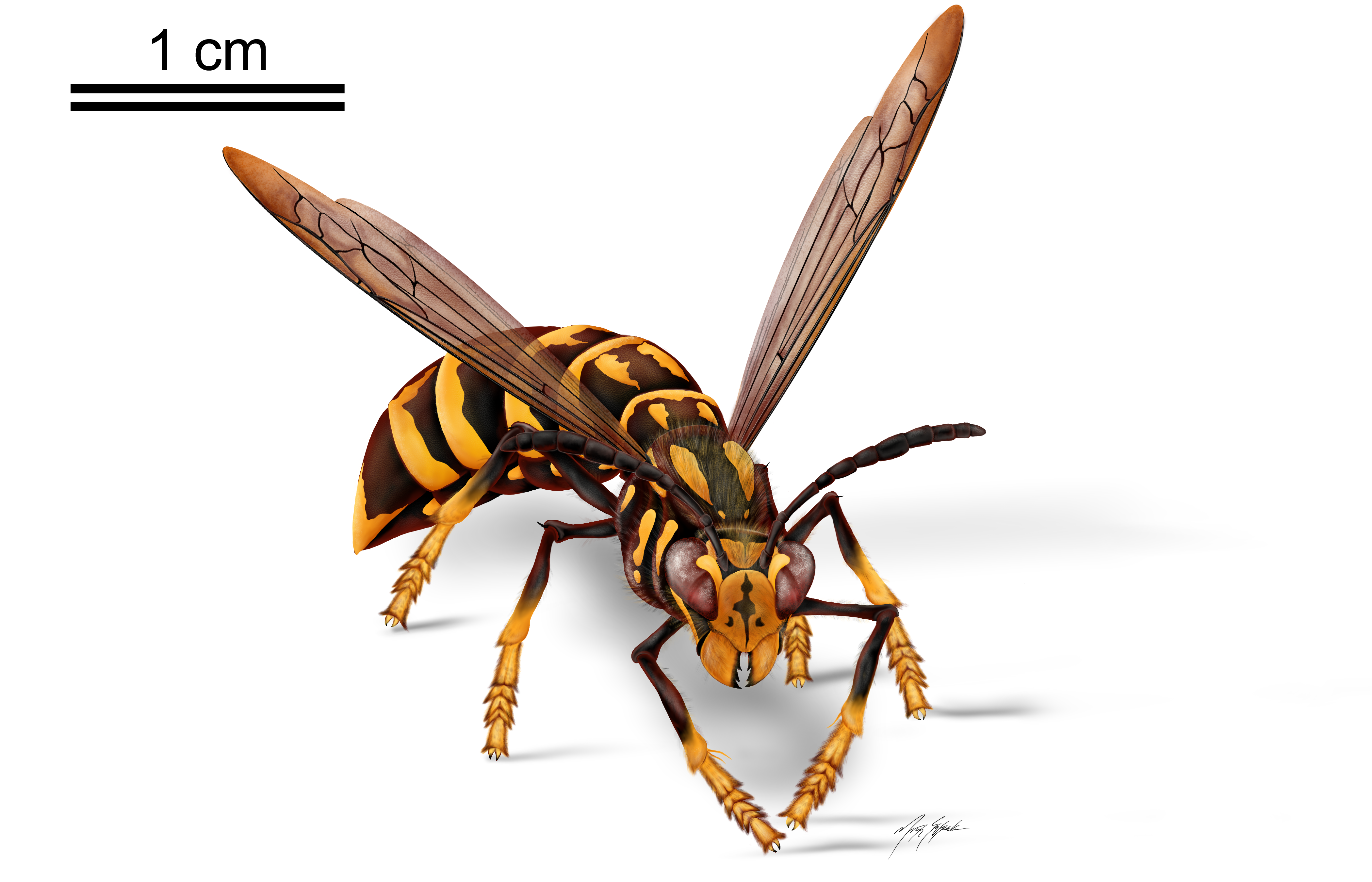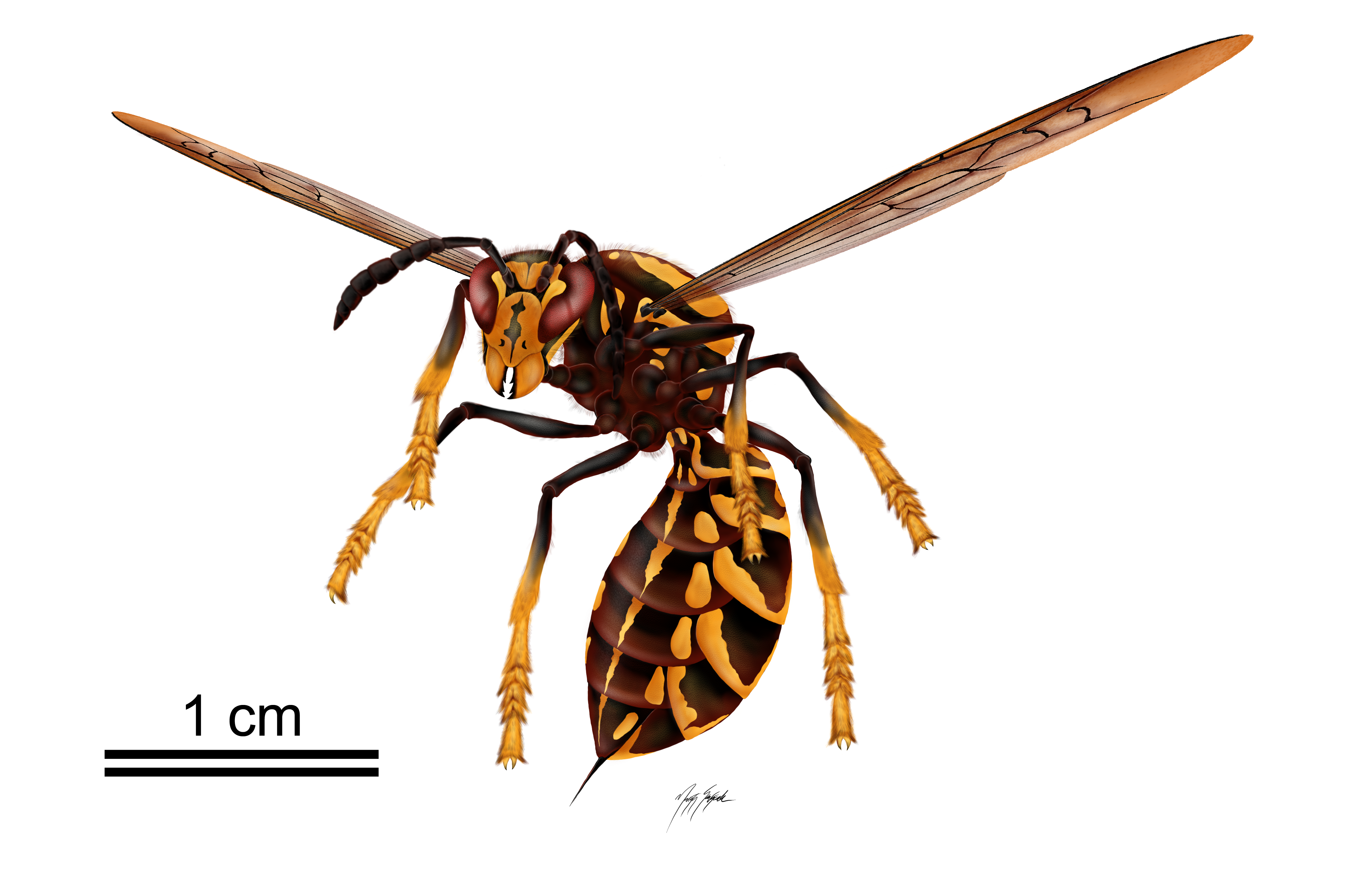Fossil Wasp (Palaeovespa sp.)This yellowjacket was a predatory social wasp. Five fossil species of Palaeovespa have been described from Florissant. The fossil you see here is often depicted as the cuddly little mascot for Florissant Fossil Beds National Monument, but in reality, she may not have been quite so friendly, as you can see from some of these reconstructions. Look closely at the fossil and you will see the well-preserved stinger slightly protruding from the rear of the abdomen. Stingers in wasps are derived by evolutionary modification of the egg-laying ovipositor, and so only the females can sting. The wasp filled an important ecological niche in Florissant’s Eocene ecosystem, and while she may have frightened other animals, everything she did was for the sake of her family in the nest. 

Left image
Right image
The wasp was an aggressive hunter of other insects and it was well-adapted for defense of its nest. It had powerful mandibles and a retractable, venomous stinger. The narrow constriction between the abdomen and thorax provided flexibility of movement while stinging its victim or moving inside the nest.

NPS/SIP Mariah Slovacek 
NPS/SIP Mariah Slovacek |
Last updated: October 4, 2021
